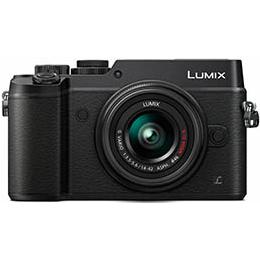panasonic lumix dmc-gx8

Supported Versions
Requires Dragonframe 4.3.4 or newer. (5.x, 2024.x, 2025.x are newer).
Live View
The Panasonic Lumix DMC-GX8 provides a live view over HDMI. This camera requires a separate connection to the computer, via an HDMI capture device, to access the live view. We do not recommend this setup, because it is complicated and fairly expensive. Please consider a used Canon EOS that we support instead.
Camera Settings
Dragonframe controls the Panasonic Lumix DMC-GX8 ISO, shutter speed, and aperture (with digital lens).
Considerations
When using exposure simulation (Constant Preview : On), the live view refresh rate will slow down to approximately the shutter speed.
Product Info
You can find the Panasonic Lumix DMC-GX8 manual and specifications at the Panasonic website.
Manual Lens to Avoid Flicker
To avoid any potential flicker that can be caused by electronically controlled aperture lenses, please consider using a fully manual aperture lens.
Learn More about Aperture Flicker
Setup Instructions
- Create a new scene or open an existing scene. (Dragonframe will not connect to your camera unless you have a scene open.)
- Power your camera by AC power if possible, or use a fully charged battery.
- Close any other applications that might connect to your camera.
- - For macOS, Open Image Capture, select your camera, then in pop up area in lower-left select Connection camera opens: No application. (See Picture)
- Make sure Dropbox is not a client of the camera.
- You may need to quit Google Backup and Sync, since it can interfere with the camera even if you turn off syncing.
- If you have anti-virus software, white-list Dragonframe so that it may access your camera.
- Set the Mode Dial to Manual (M).

- Set the Drive Mode Dial to Single.
- Set USB Mode to Remote Control(PTP) (in Setup Menu #3).
The camera will not connect unless you do this. - Set ISO increments to 1/3 (in Setup Menu #3).
- Set Motion Picture | HDMI Rec Output | Info Display to OFF.
- Set LVF Disp. Style to Full (second choice) (in Custom Menu #5).
- Set Monitor Disp. Style to Full (second choice) (in Custom Menu #6).
- Set Monitor Info. Disp. to OFF (in Custom Menu #6).
- Set Constant Preview to ON for Exposure Simulation or OFF for faster live view refresh.
- Set Quality to RAW or JPG, but not BOTH.
- Connect your camera to the computer with an appropriate USB cable.
- Connect your camera's HDMI output to the computer through a compatible HDMI capture device. (Do not connect HDMI directly to the computer!)
- Select the HDMI device as the Video Assist Source in the Capture menu.
- Select your camera as the Capture Source in the Capture menu.
- Proceed to the Cinematography workspace to adjust the camera exposure settings, check focus, and take test shots.
